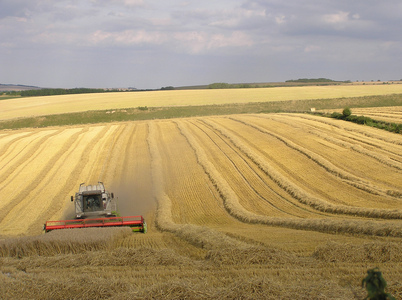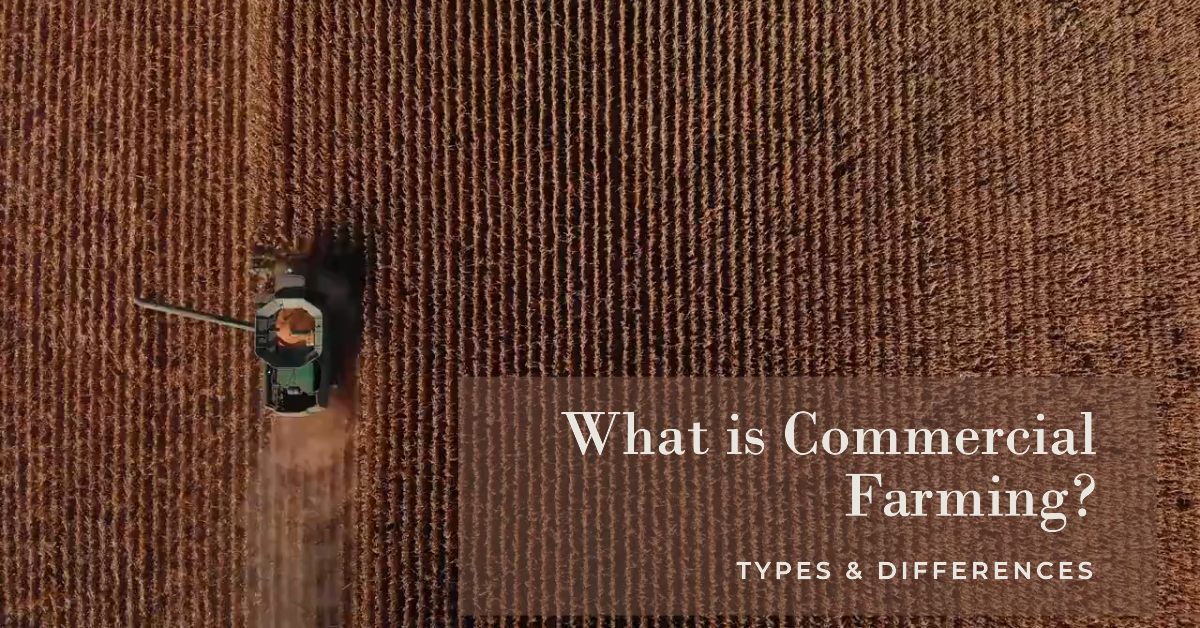Examining Sustainability: Commercial Farming vs Subsistence Farming Approaches
Examining Sustainability: Commercial Farming vs Subsistence Farming Approaches
Blog Article
A Thorough Consider the Obstacles and Benefits of Modern Agriculture
Modern agriculture stands at the crossroads of development and sustainability, providing a wide variety of opportunities and challenges. With advancements like precision farming and biotechnology promising enhanced productivity, the industry concurrently faces essential concerns such as ecological destruction and socio-economic differences. As we discover the complex equilibrium in between technological development and its wider impacts, the question arises: can we achieve a lasting future that profits both the setting and farming areas? The course ahead demands a mindful assessment of these characteristics, welcoming stakeholders to think about the capacity for transformative modification in agricultural methods and policies.
Technical Innovations in Farming
Advancements such as accuracy biotechnology, automation, and agriculture have transformed conventional farming methods, permitting for more lucrative and sustainable procedures. Accuracy farming makes use of GPS technology, sensing units, and information analytics to maximize field-level management relating to plant farming.
Automation in farming has actually additionally propelled the industry ahead, with the introduction of self-governing tractors, drones, and robotics. These modern technologies decrease labor demands and enhance functional rate, enabling for prompt growing and harvesting. Drones, specifically, offer beneficial airborne images and information, helping farmers in monitoring crop health and discovering concerns early.
Biotechnology has actually additionally played a crucial duty in progressing farming methods. Genetically modified organisms (GMOs) have been developed to improve plant resistance to parasites and conditions, lower dependence on chemical therapies, and enhance nutritional web content. This modern technology adds to food security and fulfills the needs of a growing international population. Jointly, these technological improvements have actually laid the foundation for a much more lasting and durable agricultural future.
Ecological Difficulties
Agriculture encounters several ecological challenges that endanger its sustainability and productivity. The long-lasting stability of agricultural land is jeopardized, necessitating the fostering of more sustainable techniques.
Water scarcity is another substantial difficulty, especially in areas where agriculture heavily relies upon irrigation. Environment change is intensifying this problem, modifying precipitation patterns and boosting the regularity of droughts. Efficient water administration systems, such as drip watering and rainwater harvesting, are critical to mitigate these impacts, yet their execution remains uneven across different regions.
In addition, agriculture is both a sufferer and a factor to environment modification. It makes up a considerable share of greenhouse gas emissions, mainly from animals production and rice cultivation. Transitioning to low-emission farming methods, such as precision farming and agroforestry, can help in reducing this impact. These techniques require significant financial investment and technical competence, positioning a barrier to prevalent fostering. Attending to these environmental challenges is essential for making certain a sustainable agricultural future.

Financial Influences
The financial effects of contemporary agriculture are multifaceted and extensive, affecting both local and international markets. Developments in technology and manufacturing techniques have dramatically boosted agricultural performance, resulting in more effective food supply chains and decreased prices for consumers. This enhanced efficiency has actually allowed countries to satisfy expanding demands, maintain food prices, and add to economic development. Furthermore, the export of farming commodities has come to be a considerable resource of income for several countries, playing a critical role in their financial growth.
Nonetheless, these benefits are not without difficulties. The capital-intensive nature of contemporary farming needs substantial financial investment in equipment, plant foods, and genetically changed seeds, which can be financially troublesome for small-scale farmers. This typically leads to boosted financial debt and economic susceptability, possibly bring about the consolidation of farms and the loss of rural livelihoods. Additionally, global market variations can content influence the productivity of farming exports, making economic situations reliant on farming prone to financial instability.
Additionally, subsidies and profession plans in developed countries can misshape market rates, affecting competitive equilibrium and possibly disadvantaging farmers in developing nations. In general, while modern farming drives economic development, it likewise requires navigating complex economic landscapes to make sure equitable and lasting growth.
Social Ramifications
While modern-day agriculture has brought around significant developments, it likewise offers numerous social ramifications that call for consideration. As business farming entities significantly dominate the agricultural landscape, smaller farms often battle to complete, leading to the disintegration of country areas have a peek at this site and traditional farming practices.

Such practices could additionally limit customer options and decrease the ability of neighborhood neighborhoods to control their food resources. As these social implications unravel, it ends up being essential to resolve them to make sure equitable and lasting agricultural growth.
Future Instructions
Looking in advance, numerous encouraging avenues for modern agriculture might deal with the difficulties encountered today while cultivating lasting development. Breakthroughs in technology, such as precision agriculture, offer the potential to optimize resource use and increase efficiency.
Biotechnology also holds immense promise for the future of agriculture. Genetically modified microorganisms (GMOs) and genetics editing and enhancing strategies, like CRISPR, can improve plant durability against climate change, parasites, and conditions, hence enhancing food security. Branching out plant ranges to include even more nutrient-dense and climate-resilient alternatives could boost both environmental stability and human nutrition.

Conclusion
Modern farming, identified by technical improvements, provides both chances and challenges. While advancements such as precision farming and biotechnology enhance performance and sustainability, they likewise contribute to ecological concerns like soil degradation and water deficiency. The financial impacts are substantial, influencing small-scale farmers and leading you could try here to broader social effects. Attending to these complexities calls for a shift in the direction of lasting practices that stabilize efficiency with ecological stewardship and social equity, therefore ensuring a resistant future for worldwide farming systems.
Modern agriculture stands at the crossroads of advancement and sustainability, presenting a wide range of obstacles and opportunities. Furthermore, worldwide market variations can impact the earnings of farming exports, making economies reliant on agriculture prone to financial instability.
Moreover, the intensive usage of modern technology and mechanization in agriculture has led to a decline in farming work opportunities.Looking ahead, a number of appealing methods for modern-day farming could deal with the difficulties dealt with today while cultivating lasting development. commercial farming vs subsistence farming.Modern agriculture, characterized by technological developments, provides both chances and difficulties
Report this page